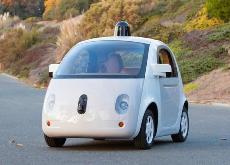
Imagine a world where everyone can get from point A to point B regardless of their ability to drive. Imagine if people can get around whether they own a car or not. Elderly people who have poor eyesight and cannot get a driver’s license anymore can still go out in the car. In the past, these things were figments of our imagination. Now, they are possibilities that have turned into realities thanks to self-driving vehicles.
What are self-driving cars?
Self-driving cars or autonomous vehicles are cars that are operated by computer software. These cars use sensors that are processed by the software in order to sense things around the roads such as pedestrians, other cars, roadblocks, cyclists, etc. Aside from that, the software also processes maps via GPS.
There are two companies that are in the race for self-driving cars – Google and Uber. Each company is going about the technology in their own manner, but they have common goals.
Advantages of self-driving cars
It is estimated that 1.3 million people die each year as a result of automotive accidents. Both Google and Uber’s aim is to reduce that number, since both claim that self-driving cars will drastically reduce the number of accidents. In the United States, around 94% of all automobile accidents are due to human error. If the technology and foresight of both companies hold true, that’s a lot of potential accidents that would not happen, and as a result, lives will be saved and injuries lessened.
Aside from saving lives and preventing injuries due to car accidents, another advantage of self-driving cars is freeing up the cities, thereby improving traffic and improving quality of life as a result. In the entire world, about 20 percent of the city spaces are taken up by parking spaces and parked vehicles. Traffic congestion will be improved. The results are, less time travelling to and from work, and more time for leisure and relaxation with your family.
Testing period
As with any new technology, it has to undergo rigorous testing first before it is rolled out into the market. For Google, they’ve been testing their fleet of self-driving vehicles in different places around the US – Mountain View, CA, Austin, TX, Kirkland, WA, and Phoenix, AZ. They claim to have logged over a million miles of testing at this point. They are testing in various places to see how the vehicle will adapt to different types of areas and weather conditions.
As for Uber, they rolled out their self-driving Ubers in Pittsburgh a week ago. They aren’t completely driverless though, as there are two persons in the front – one to take over manually in certain situations, and the other to record data in a laptop. Riders in Pittsburgh could get lucky and get the self-driving car instead of a regular UberX.
Accidents
Google recently had one of its self-driving cars involved in an accident, in Mountain View, CA. This happened at an intersection when the Google Lexus was crossing on a green light and the other driver running a red one. Upon seeing the other vehicle, the Lexus immediately braked but it was not enough to prevent a collision, causing major damage to the self-driving car.
As for Uber, documents obtained by The Guardian showed that people had to sign a waiver, declaring no liability to the company in case of an accident and injuries as a result. This is one area that a car accident attorney could be helpful, since as of now, it is unclear what will happen if a person is injured due to an accident involving a self-driving car.






